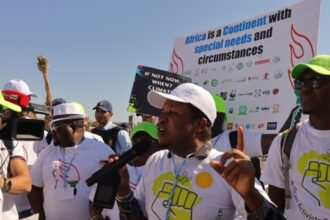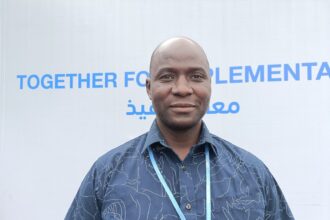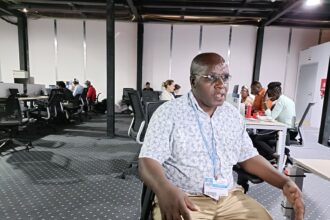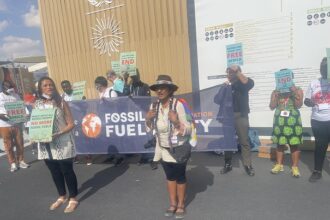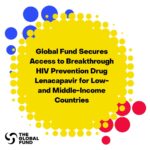African negotiators wary on climate financing
A climate change negotiator being interviewed by Aimable Twahirwa from Rwanda one…
Kenyan team among winners of Local Adaptation Champions Awards at COP27
Victor Orindi of Adaptation Consortium By Ruth Keah | rkeahkadide@gmail.comAs curtains closed…
MESHA at UN Summit on Climate Change (COP27)
Front row (from left to right) Aimable Twahirwa (Rwanda); Jennifa Gilla (Tanzania);…
Ethiopia needs $157b to implement climate adaptation programme
By Mekonnen Teshome | mokish03@gmail.comWith the adoption of a Climate Resilient Green…
Why African CSOs are disappointed by COP27 outcomes for the continent
Dr Mithika Mwenda addresses climate activists during one of the COP27 sessions…
Farmers forced to act smart to tackle effects of climate crisis on agriculture.
By Rosemary Onchari | oncharir37@gmail.com Margaret Nyaboke was an optimistic farmer as…
Kenyan outfit wins adaptation awards at COP27
By Ruth Keah I rkeahkadide@gmail.com Victor Orindi, head of Adaptation Consortium As…
Locals in South Coast Kenya to benefit from the carbon market initiative
By Ruth Keah I rkeahkadide@gmail.com Dr Kipkorir Langat, Principal Scientist, Kenya and…
Activists: We will win against fossil fuels
African activists have promised resistance at home to oil-and-gas touting leadersBy Agatha…
COP27: Negotiators worried over little progress on climate talks
African climate negotiators express concern over lack of progress on adaptation, climate…





